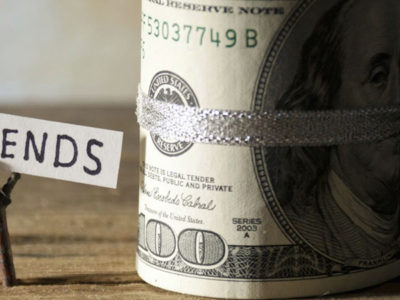2014 Investment Outlook – Cautious
Stocks moved up smartly in 2013, rising more than 20% on most major stock indices. This gain was on top of an already strong period seen from 2009 through 2012. The stock market, as reflected in the S&P 500 (broad-based stock index), has now risen more than 170% from the lows in 2009 and small and mid-cap stock indices are up more than 200%.
As a result of the huge increase in stock prices during this bull-market run, stocks are now priced for perfection. Actually, they are now imperfectly priced, far too high relative to earnings. Yes, “irrational exuberance” is back. The CAPE (cyclically-adjusted price/earnings ratio) is now above 25 which is extremely high and near historical levels when stocks correct and/or enter a bear market (decline of at least 20%).
It’s interesting to observe that as investment risks have increased, Wall Street remains wildly optimistic about economic prospects and stock returns. Indeed, investment advisory newsletters are more bullish than at any other time in history and the public has been pouring money into stock mutual funds once again at a feverish pace. This is typical behavior near market tops and should be seen as a contrary indicator. The best time to invest is when prices are depressed (valuations attractive) and the general public is pulling money from stock mutual funds in a panic—now we see the opposite.
In November 2013 I made the first major investment policy change in two years and sold most of my stock holdings for my discretionary portfolios. My belief is that at some point in a bull market, if valuations and returns appear excessive, they probably are. And, eventually stocks “revert to a mean” and are priced more reasonably (that’s what bear markets and corrections do to prices). So, for moderate and conservative investors, I believe it is time to greatly reduce stock exposure and control risk. If you have any doubt about where we are in this bull-market cycle, take a look at these returns for a handful of stocks (performance for 2013 through mid-December). Note, this is a very small sample and there are hundreds of stocks that had similar performance last year.
| Name | 2013 Performance through Mid-December |
| Amgen | 32% |
| Bank of America | 34% |
| Boeing | 80% |
| Computer Sciences | 60% |
| DirecTV | 33% |
| 80% | |
| Honeywell | 40% |
| Mattel | 26% |
| Microsoft | 44% |
| Raytheon | 51% |
| Toyota | 32% |
Typically the highest, wildest returns that make no sense appear in the late stages of a bull market or bubble. While no one can predict with perfect accuracy when sentiment and trends will change, one look at the returns on this list should provide evidence that it is indeed a dangerous time to have heavy stock exposure.
If you need any additional evidence of the risks now present in the stock market, here’s some more ammunition for you: Price-to-book ratio is at 4.2, the highest level seen in many years. Price-to-earnings (CAPE) is over 25, which is the same level we saw just before the crash of 2008-09. Median price-to-earnings ratio for the Value Line stock universe is now 18.7, which is 8% higher than it was just before the market peaked in 2007 (prior to a 55% decline in the S&P 500). Price-to-dividend yield is also near an all-time high as the Dow Jones Industrials now yield only 2%. Margin debt (money borrowed to purchase stocks) is at an all-time high and Investment Advisory Newsletters show the lowest percentage of bears in history at 14% and nearly the highest percentage of bulls at over 60%. The indicators all point in the same direction – be cautious.
Bottom line, there are times when it certainly pays to have a heavily-weighted stock portfolio (most recently in 2009 and again at the end of 2011, when fear was high and stock prices low) and there are times when it makes sense to reduce risk and protect profits. My opinion is just that (mine), but the facts I’ve listed suggest “preservation of capital” should be the strategy adopted by prudent investors and advisors at this time. I don’t know how much further the market could run before correcting or entering a bear market, but investors should now be primarily focused on NOT losing money when valuations are extreme and not on missing out if the rally continues.
Ted Williams, the legendary baseball player who some argue was the greatest hitter ever, reduced hitting to a science. He broke the strike zone into small zones (quadrants) and knew exactly where he would be most successful if he swung at a pitch. He knew that if he waited for a pitch in his “happy zone” he would more than likely be successful and hit it hard (and he did that a lot). If he didn’t get a pitch in his zone where he had a history (probability) of success, he didn’t swing.
Investors can learn a lot from the patient approach adopted by Ted Williams and apply it to investing. Wait for your pitch.
DownloadAt the time of publication, Stuart Chaussee and/or his clients hold positions in Bank of America, Facebook, Mattel and Microsoft. Holdings can change at any time. Under no circumstances does the information in this column represent investment advice or a recommendation to buy or sell securities.


